Tamil Nadu
About Tamil Nadu
Tamil Nadu- A land of cultural and religious heritage, offers every chance to its tourists and pilgrims to be enchanted with the vast plethora of history and beauty that it has. It is a blend of both- the modern and the ancient, which makes Tamil Nadu a beautiful destination to explore and experience our past cultural heritage with all the amenities of the present.
Lying along the Bay of Bengal, Tamil Nadu has a glorious history that spans to a millennium and a present, that is paving a way for it in becoming one of the most promising states in the country. This state has seen the rise and fall of many dynasties such as the Cholas, the Cheras and the Pallavas. Each dynasty has enriched the place with its customs and traditions. Tamil Nadu sees a lot of tourists coming from all over the world to see the famous Meenakshi Temple, the tip of India – Kanyakumari or the beautiful hill station of Ooty. There is a great fascination to explore the ruins of the forts and palaces of the then great dynasties. The intricately carved structure of Mahabalipuram offers an insight into the architectural splendour of the Indian Civilization.
Chennai
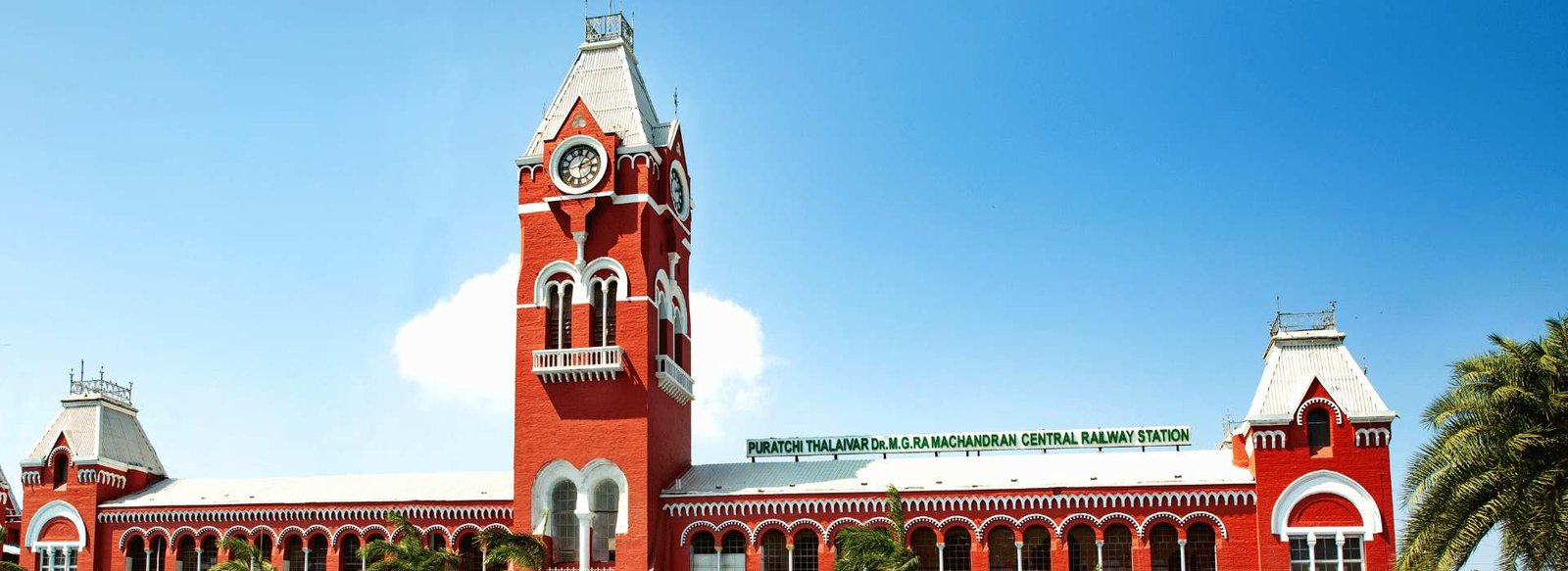
Formerly known as Madras, Chennai is the capital city of the state of Tamil Nadu, in the southern part of India. Located on the Coromandel coast of Bay of Bengal, Chennai is as dynamic as it is immersed in tradition. This ‘capital of the south’, is one among the four metropolitan siblings of India, having a rich cultural history which it perfectly balances with its metropolis lifestyle.
Amid its chaos of traffic and sweltering humid climate, Chennai is worth visiting for its temples steeped in south-Indian culture, British-era museums and monuments, culinary delights and Marina Beach (Second largest urban beach in the world). Chennai’s skyline is famous for its towering skyscrapers, but the heart of Chennai has an old-world charm to it that refuses to be overshadowed.
Things to Do
Marina Beach
Situated in the city of Chennai in Tamil Nadu, Marina Beach is a natural urban beach along the Bay of Bengal. The beach is stretched out to a distance of 13 kilometres making it the longest natural urban beach in the country, second largest in the world and also the most crowded beach in India with almost 30,000 visitors a day. sWith a white sandy shore that looks as though extending to infinity, the landscape of Marina Beach is a mesmerising and serene sight to behold. The beach has a primarily sandy terrain and is dotted with plenty of merry-go-rounds and shops selling souvenirs. You could take a walk along the Marina beach with your near and dear ones or even all alone and enjoy the cool evening sea breeze along with a hot plate of crispy sundal and murukku. Watching the sun crawl upwards into the sky or even disappear into the ocean from the beach, is an awe-striking and enchanting experience.


Government Museum
Government Museum was established in 1851 and is the second oldest museum in the country after the Indian Museum in Kolkata. Situated in Egmore suburb of Chennai, it is built in the Indo-Sarcenic style and houses a rich collection of the works of Raja Ravi Varma.
MGR Film city
Having been established in the year 1994, a considerably new structure, the MGR Film city is managed by the Government of Tamil Nadu in loving memory of MG Ramachandran who was not only a crowd-pleasing tamil actor but also a longtime CM of Tamil Nadu. Covering a massive 70 acres at Taramani in Chennai, the MGR Film City is a popular tourist hotspot and the place-to-be for several South Indian films directors. Besides being the best place to catch a glimpse of a popular Tamil actor and the film city also has a film school, indoor and outdoor shooting locations, replicas of village and urban areas, temple, church, mosque, post office, police station, prison, courtroom, and landscaped gardens in Italian, Japanese and Mughal styles. They recently opened the MGR Knowledge Park which has been adding to the attraction.


ISKCON (Hare Rama Hare Krishna) Temple
ISKCON Temple Chennai is a temple devoted to Lord Krishna. It is located on the East Coast Road in southern Chennai. Built on 1.5 acres of land, ISKCON, Chennai is the biggest Radha Krishna temple in Tamil Nadu. It was officially inaugurated on 26 April 2012. The deities revered in the temple include Radha Krishna and lord’s family, including Sri Sri Nitai Gauranga. ISKCON Temple is located in the Injambakkam region in Thyagaray Nagar of Chennai. It is one of the most popular establishments by the ISKCON society in India. It is a harmonic blend of tradition and modernity in an artistic style, as well as the best of latest scientific technology.
Like all the other ISKCON temples in the world, the main deity here is Lord Sri Krishna Chaitanya whose teachings and life stories are preached here. The deities worshipped in the temple include those of Rukmini and Krishna. The image of deity Satyabhama, one of the eight wives of Krishna, is also housed in the temple premises. Other deities worshipped in the temple include Jagannath, Baladeva, Subhadra, and Gaura-Nitai. ISKCON Chennai also fosters and protects the traditional art and craft of South India.
Madras War Cemetery
The Madras War Cemetery, right in the heart of the city of Chennai, is a recognition of the glory as well as horrors of the war our ancestors have fought to make this world a more peaceful place. In short, it houses the last remains of around 855 martyrs who laid down their precious lives at the battlefronts in the devastating Second World War and also a Memorial stone for 1000 more who died fighting in the Great War before that. In 1952, the Commonwealth War Graves Commission and the Indian Government together established this cemetery to commemorate those who died to save our lives. Among the tombstones, there are three non-World War martyrs and a small memorial for a sea merchant as well. It must be remembered that the headstones are not only of soldiers who fought but of doctors, nurses and other support staffs as well.

Auroville

Located around 15 km from the city of Pondicherry, Auroville is located in Tamil Nadu and was founded in 1968 by Mirra Alfassa, a disciple of Aurobindo and fondly known as the ‘Mother’ of Sri Aurobindo Society. This place is the epitome of tranquillity and proves as the perfect escape for the ones in search of peace. The best way to experience Auroville ashram is to actually just sit in one of the cafes, and talk to some of the residents here about their experience of living in the city.
Conceived as the ‘Universal Town’, Auroville is an experimental township where people from across the world of all cultures and traditions come and live together in peace. People from 124 countries including Indians from 23 different states came together with some of their native soil brought from their homelands and deposited in a marble urn. Currently, over 2,800 people from over 195 different nationalities are the official residents of this township. The Aurovilleans as they call themselves live together on the principles of peace, harmony, sustainable living and ‘divine consciousness’ which was the philosophy of the Mother.
Auroville Beach
Auroville Beach, also known as the Auro Beach is located in Pondicherry. It is a part of the Auroville Ashram and is situated about 10 kilometres away. The beach is about 12 kilometres away from Pondicherry and lies on the right-hand side of East Coast Road. Auro Beach is one of the most popular beaches in Pondicherry. It attracts a lot of tourists and locals. The beach stays true to its form and doesn’t have a lot of establishments that provide food or snacks. The Ashram has maintained its serenity and ensured that it is not tampered or changed a lot due to human encroachment.

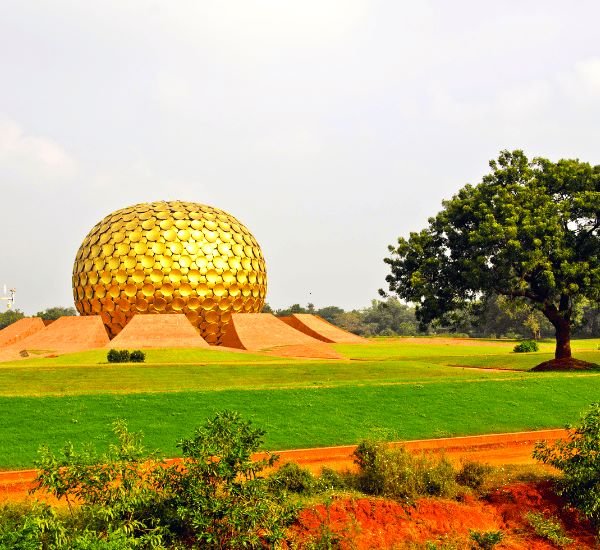
Matrimandir
Matrimandir, which is the Sanskrit word for ‘Temple of The Mother’, is the most important edifice of the Auroville township in Pondicherry. Located just in the middle of Auroville in a large open area known as ‘Peace’, Matrimandir is fondly known as the ‘soul of the city’ and holds crucial spiritual significance for those who practice Integral Yoga. Popular as the golden globe of Pondicherry, it is a place for individual silent concentration. You can visit Matrimandir from inside. Matrimandir is no tourist place, and the entry inside the central premises of the building is allowed only to those who have a brief understanding of the idea of Auroville township. However, the beautiful gold dome structure of the Matrimandir, which is surrounded by twelve lush green gardens, attracts the tourists visiting Pondicherry. A viewpoint has been constructed to the south of the building which offers a panoramic view of the Matrimandir and its surroundings. The viewpoint is just 10 minutes’ walk away from the Visitor’s Centre.
Mahabalipuram
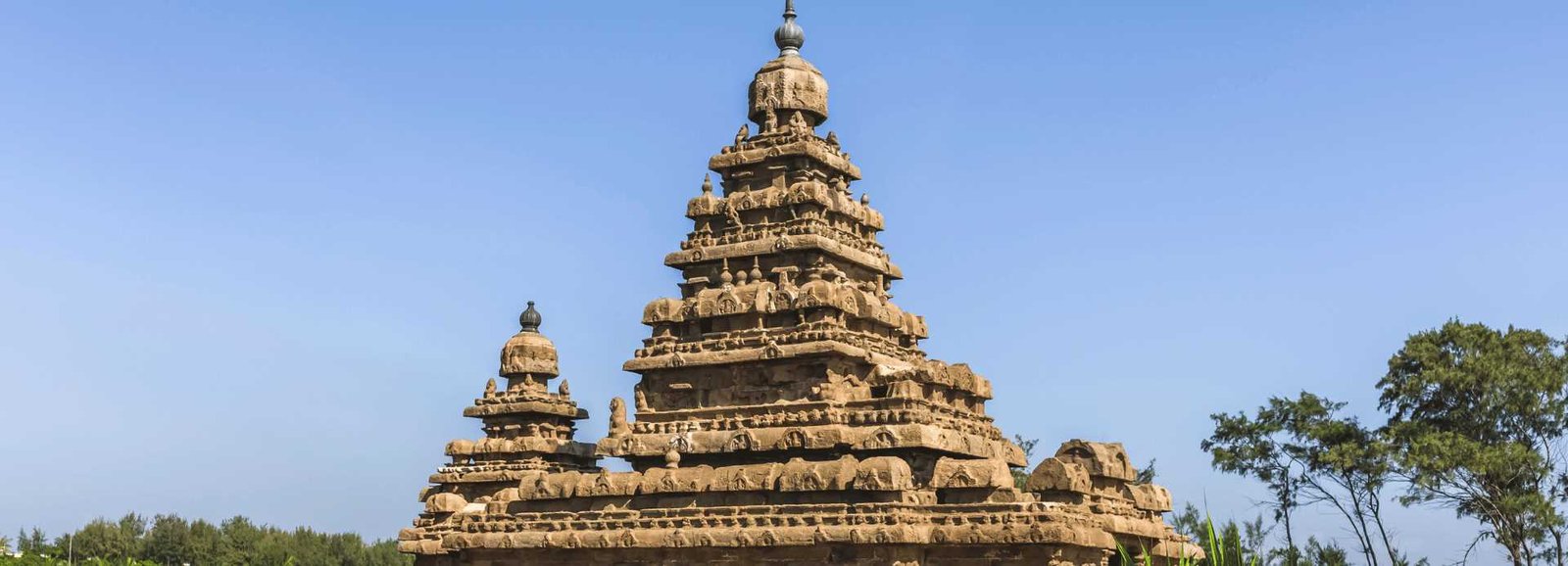
Famous for its intricately carved temples and rock-cut caves, Mamallapuram or Mahabalipuram as it is famously known, is a historically important and well-loved tourist location situated on the Coromandel Coast along the Bay of Bengal, in the state of Tamil Nadu. Once the abode of the famous demon king Mahabali, Mahabalipuram was later renamed Mamallapuram. The serenity, the alluring atmosphere and the impressive setting with many beautiful white sandy beaches dotted with casuarina trees are all reasons as to why one would want to visit this wonderful town. Some famous tourist spots include the UNESCO world heritage site Group of Monuments like the Shore Temple and the Five Rathas, the Crocodile Bank which is home to some exquisite species of crocodiles and alligators, and the beach resorts in Kovalam and Sadras.

Shore Temple
Built during the 7th century, Shore Temple is one of the oldest South Indian temples constructed in the Dravidian style and depicts the royal taste of the Pallava dynasty. The work of the temple has been listed amongst the World Heritage Sites by UNESCO. It is located in Mahabalipuram and is one of the most photographed monuments in India situated on the shores of Bay of Bengal.
Mahabalipuram Beach
Also known as Mamallapuram by locals, the Mahabalipuram Beach is situated at a distance of 58 km from the Chennai city in Tamil Nadu. The beach lies on the shore of Bay of Bengal and comprises of some rock-cut sculptures which are pleasing to the eyes. It is also famous for caves, massive rathas, chariots and temples which offer a great spot for holiday. The Mahabalipuram beach is a perfect place to relax and give yourself a break from the deadlines and work pressure on a daily basis. People from near and far flock to the beach especially to enjoy the natural sunbathing offered by the beach. The windsurfers and swimming lovers are bound to have an amazing time at the beach for they are seen doing just that on the shores of the beach.
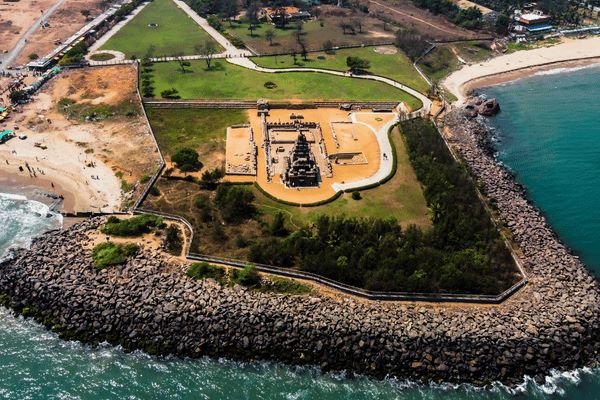
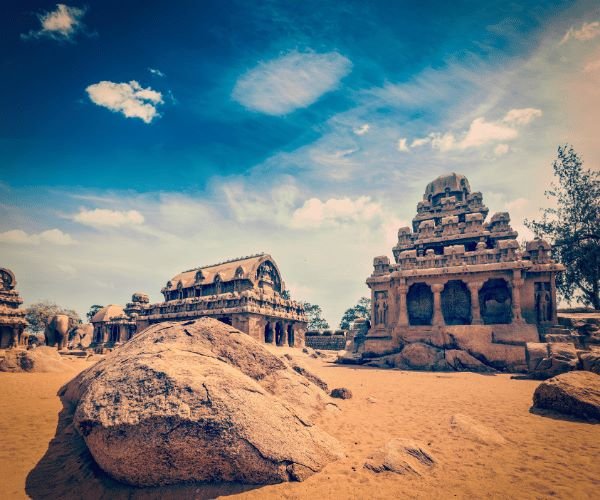
Five Rathas
The Five Rathas, also known as Panch Rathas, is a exemplary set of rock temples. They are excellent examples of the evolution of Dravidian style architecture.These temples are built in the same shape as pagodas, and greatly resemble Buddhist shrines and monasteries. The rathas are associated with the great epic Mahabharata. The first ratha that is located right by the entrance gate is Draupadi’s Ratha. It is shaped like a hut and is dedicated to the goddess Durga. Next comes Arjuna’s Rath. This one has a small portico and carved pillar stones and is dedicated to Lord Shiva. There are no carvings inside this temple, but many are on the outside. Directly in front of Arjuna’s Rath is the Nakula Sahadev Rath. This ratha has some huge elephant sculptures included that are a huge draw for the Five Rathas. It is dedicated to the God of Rain, Lord Indra. The Bhima Rath is huge. It measures 42 ft in length, 24ft in width, and 25ft in height.
Arjuna's Penance dammy
The Arjuna’s Penance is an enormous rock-cut relief, one of the largest in the whole world, situated in Mahabalipuram of Kanchipuram district, Tamil Nadu. It is also known by the name ‘Descent of the Ganges’ because the structure depicts either or both of these two significant and symbolic events of Hindu mythology; thus making this attraction spot a favourite among historians, scholars, academics as well as tourists who are enthusiastic about the cultural past of India.

Kanyakumari
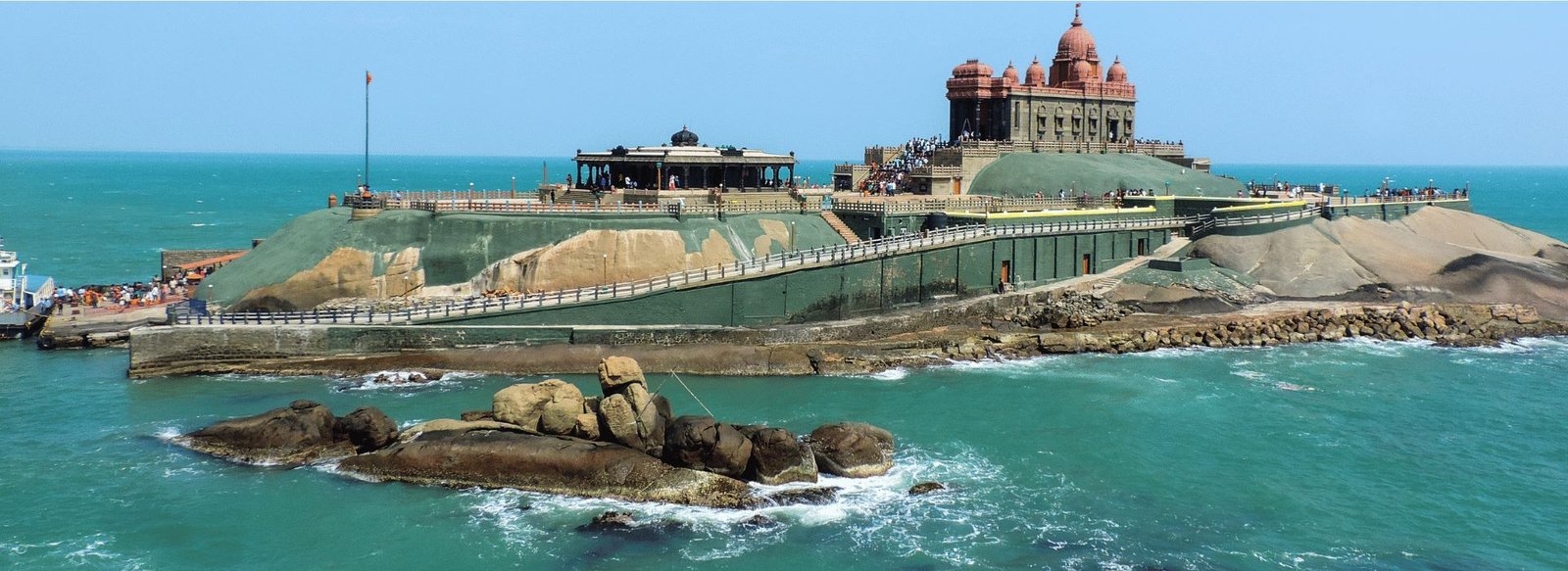
Bordered by the three seas – Arabian, Indian and the Bay of Bengal, Kanyakumari is the southernmost tip of Indian Peninsula. A small coastal town in the state of Tamil Nadu, Kanyakumari was earlier known as Cape Comorin. The town is a mountainous terrain amid three seas, with elevated patches of hills, coconut trees and lined with paddy fields. Kanyakumari is also the only place in India where you can observe the sunrise and sunset at the same beach. Waterfalls in Kanyakumari that you should not miss out on include the Thirparappu falls, the Courtallam Falls, and the Olakaruvi falls. Kanyakumari has an authentic South Indian cuisine, with seafood and coconuts being an integral part of almost all dishes. While Kanyakumari is not a traditional shopping destination, you can buy plenty of souvenirs and curios from the numerous stalls and boutiques dotting the beachfront, with decorative seashell trinkets being a must-buy.
Kanchipuram
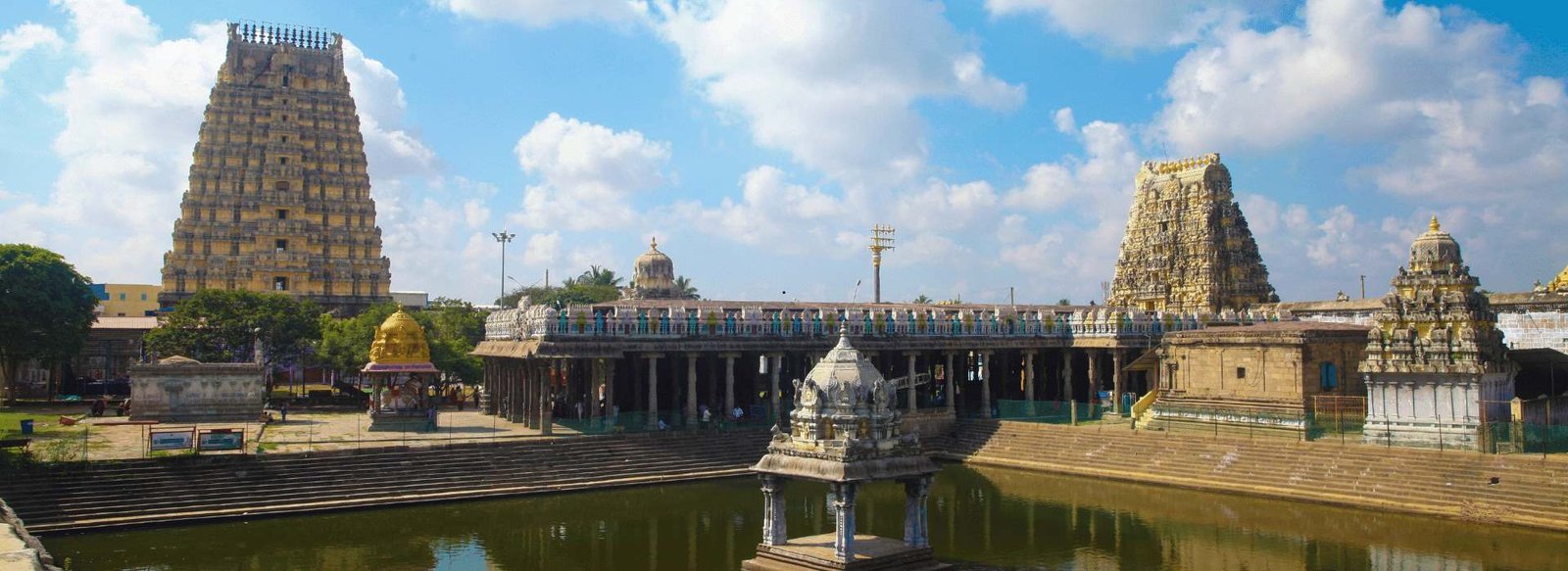
Widely known for its beautiful ‘Kanchipuram sarees’ and also referred to as the ‘golden city of a thousand temples’, Kanchipuram in Tamil Nadu is a popular tourist attraction. Kanchipuram or Kanchi attracts a lot of tourists from all over the world who are interested in Hinduism or just want to enjoy the marvel of South Indian architecture and grandeur. It is particularly known for being a culture and philosophical hub. With such an association being made with the city, it is only natural that this destination has become such an influential centre in these avant-garde times. The city is home to the famous Kanchi Kamakshi Temple, which is the highly revered abode of Kamakshi (Goddess Parvathi) – consort of Lord Shiva. The Kailasanathar Temple is also popular and is known for its magnificent architecture. The highest, largest and most impressive temple in the town, spanning 40 acres and dating back to the Pallava period is the Ekambeshwarar Temple. The Kanchi Mutt holds kutcheris or South Indian classical music concerts in the evenings.

Kamakshi Amman Temple
Southern India is well-known for its cultural heritage, and the Kamakshi Amman Temple represents an important gem from the past. Set in the midst of Kanchipuram, also known as the City of Temples, this place of worship is home to the divine Goddess Kamakshi, who is believed to be an incarnation of Parvati, the Hindu goddess of love, fertility and strength. The Kamakshi Amman temple is one of the 51 Shakti Peethas, which are sacred shrines built around the falling body parts from the corpse of Goddess Sati from heaven. It is believed the naval part of her body fell at this site, thus making it a holy abode.
Varadharaja Perumal Temple
Varadharaja Perumal Temple located in the city of Kanchipuram in Tamil Nadu is dedicated to Lord Vishnu. It is one of the 108 Divya Desams dedicated to Lord Vishnu and is of immense religious importance. It is also believed that the Alwars or the poetic saints visited this temple. The temple complex is expansive and is a work of worship that was built during the reign of the Chola Kings. It is, hence, also of great historical importance. Devotees of Lord Vishnu from all over the world visit the temple to seek blessings in Vishnu Kanchi especially during the 10-day Vaikasi Brahmmotsavam, Purattasi Navaratri and Vaikunda Ekadasi. The majestic architecture of the temple complex and the intricate carvings are sure to mesmerise one and all. The serene vibe of this scared spot is so surreal and unexplainable that one really has to visit the temple to experience it.

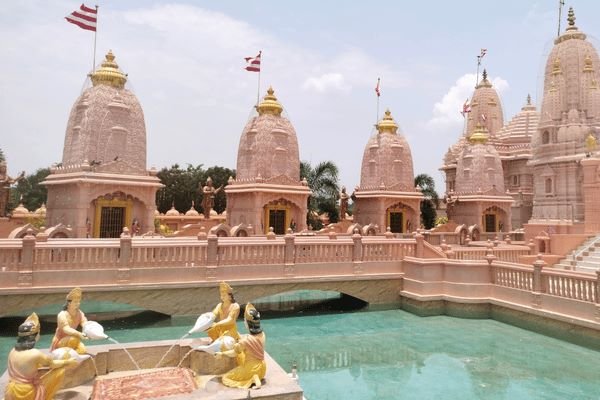
Devarajaswami Temple
The Devarajaswami Temple was constructed by the Vijaynagar kings. It is devoted to the Hindu god Lord Vishnu. There are ornamented engraved pillars that can be seen inside the temple.This scrupulous temple has a marriage hall that was built in remembrance of the marriage between Lord Vishnu and Goddess Laxmi. There is also a water tank that contains a large statue of Lord Vishnu inside the water. The tank is debilitated every 40 years and it is at that time, the 10 meter high statue can be seen, and is then established for darshan for 48 days before it is immersed in water again. There is also an enormous chain that was engraved out of one single stone.
Kailasanathar Temple
Kanchi Kailasanathar Temple is an important religious site is located on the banks of the Vedavathi River, at the western limits, facing the east side in the Kanchipuram city of Tamil Nadu. The temple holds great significance and value for the Hindu devotees and is visited by a large number of tourists all year round, but the number of visitors increases drastically at the time of the Mahashivratri. The Kanchi Kailasanathar temple is embellished with beautiful paintings and fantastic sculptures. The Temple is the most ancient temple from amongst all the temples that are located in Tamil Nadu and was built during 685 A.D. and 705 A.D. The construction of this grand structure was started by the Pallava ruler Rajasimha, whereas his son Mahendra Varma Pallava completed it.

Madurai
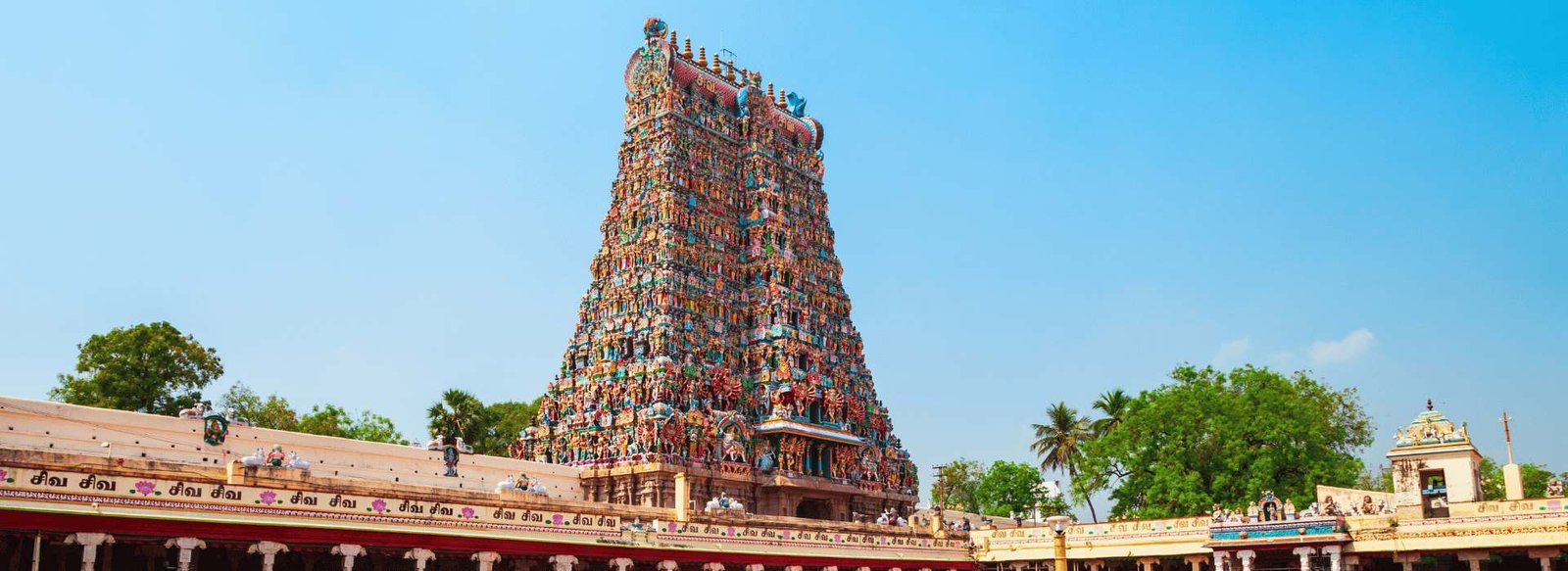
Madurai, the cultural capital of Tamil Nadu, is one of the oldest continuously inhabited cities of India. Ruled by Pandya kings for the longest time in its history, it is called as the ‘Lotus City’ as it was planned and built in the shape of a lotus. Madurai is known for Meenakshi Amman Temple, dedicated to the goddess Meenakshi with a sanctum for her consort, Sundareshwarar. There are many other ancient temples in Madurai, including Thiruparankundram. It is one of the important old temples dedicated to Lord Muruga(Karthikeya) and is located on a hillock approximately 8 km from the city. Having trade ties with ancient Rome, the place holds a great cultural heritage. With bustling bazaars and fantastic street food, Madurai has heritage walks conducted throughout the day. Madurai is instrumental in promoting Tamil language and preserving the culture.
Thirumalai Nayakar Palace
Thirumalai Nayakar Palace was erected in 1636 AD in the city of Madurai, by King Thirumalai Nayak. The palace depicts the perfect blend of Dravidian and Rajput styles. After Independence, this palace was declared as a national monument and till date continues to be one of the spectacular monuments of Southern India. The magnificent palace is located in the vicinity of the very famous Meenakshi Amman Temple. Depicting the Saracenic style of architecture, it was constructed during the rule of Nayak Dynasty and is widely considered as the most illustrious monument built by the Madurai Nayak Dynasty.
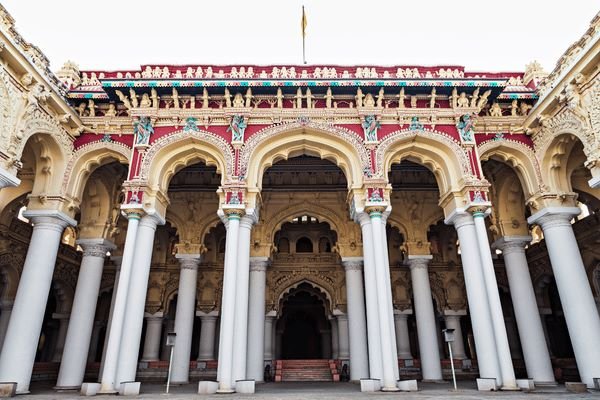

Meenakshi Temple
The historic Meenakshi Amman temple is located on the southern bank of the Vaigai River, Madurai, Tamil Nadu. Built sometime between the year 1623 and 1655, the wonderful architecture of the place is renowned globally. Meenakshi Temple is primarily dedicated to Parvati, known as Meenakshi, and her spouse, Shiva. What makes this temple different from the others is the fact that both God and Goddess are worshipped together. The most striking feature of the temple is its exquisite facade, which has highly minute details with great art pieces incorporated in the walls and pillars. Meenakshi Amman temple complex is made in accordance to the Shilpa Shastra and has 14 gateway towers or ‘gopurams’, golden ‘vimanas’, holy sanctums and shrines dedicated to the revered Goddess Meenakshi and many others. It is a major tourist attraction, with thousands of devotees visiting the shrine on a daily basis.
Coimbatore
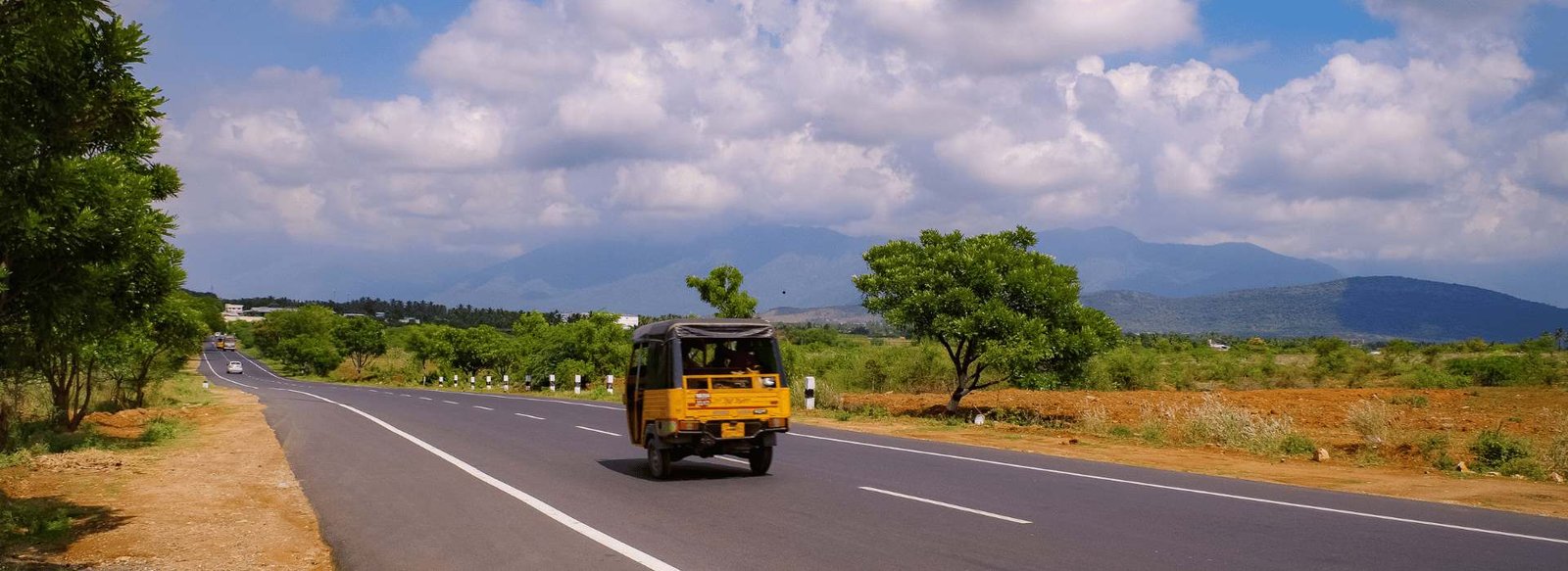
Often termed as ‘Manchester of South India’, Coimbatore, the second-largest city in Tamil Nadu, photographically situated on the banks of River Noyyal. Coimbatore, also known as Kovai, is a welcoming area with the backdrop of hustle-bustle and charm of activity and industry. From ancient temples to classy new buildings, from breathtaking mountains to jaw-dropping waterfalls, from mouth-watering cuisine to pleasant weather all year round, Coimbatore has everything you could possibly need to make for a perfect holiday experience. Coimbatore is home to a massive 112 feet tall statue of Lord Shiva, known as the Adiyogi Shiva Statue. Featured in the Guinness Book of World Records, this architectural masterpiece is a very popular tourist spot in Coimbatore and stands as a symbol of self-transformation and inner peace.

Vydehi water falls
The Vydehi water falls is situated some 35 km away from the Coimbatore city. People who pay a visit to Coimbatore must make it a point to visit the Vydehi water falls, as it is one of the most familiar water fall and is highly known for its magnificence. The falls has pulled towards itself a large number of visitors because of its scenic attraction and beauty. People can avail a taxi or cab to pay a visit to the extravagant Vydehi water falls. This can be placed on top of the places-to-visit list when planning a vacation to Coimbatore. People can indulge into utmost pleasure of the scerenity of the place and can make their trip worth remembering by visiting these falls.
Marudhamalai hill temple
The Marudhamalai hill temple is located at a towering height of 500 ft in the highland on the Western Ghats. 15 kms away to north-west of Coimbatore city, the temple has an excellent invigorating atmosphere. Vehicles are allowed to pass through the Marudhamalai temple and the devasthanam has granted three buses from the low slope of the hill to get through the temple on top. The Marudhamalai temple has its main deity as Lord Muruga and the temple attributes quite delightful facilities to the habit of making their visit a comforting one while offering their prayer to the deity. The major feature of this hill is that it grows important medicinal herbs, which is used extensively in making ayurvedic medicines.
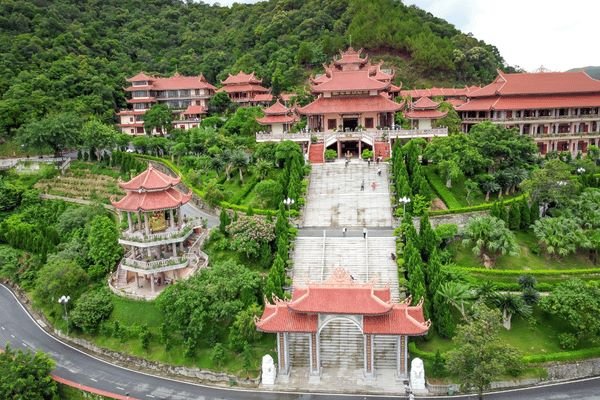
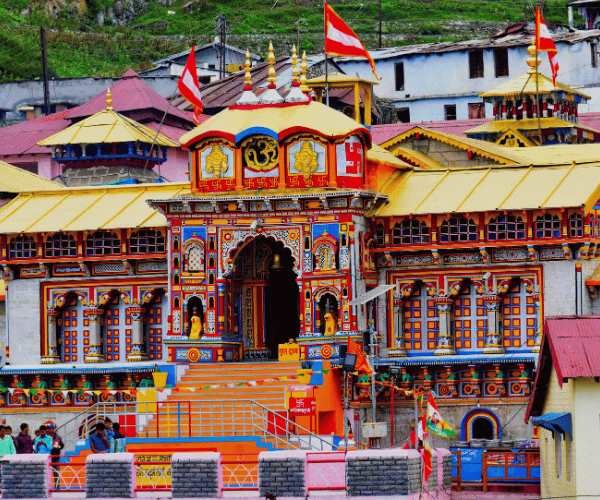
Sree Ayyappan Temple
Located in the centre of the city of Coimbatore in Tamil Nadu, India; the Sree Ayyappan Temple is a significant temple that is dedicated to Lord Sree Ayyappa. This temple in Coimbatore has been built on the same lines as of the original Sabarimala Temple in Kerala and thus is rightly honoured as the second Sabarimala Temple by devotees. In fact, not only the style of architecture but also the styles and methods of performing pooja at both the temples are similar. A visit to the Ayyappan Temple would thus make you feel as if you are in Kerala. The Ayyappa Temple has been built following the traditional styles of architecture and is a pure delight for architecture lovers, history buffs as well as religious devotees. The temple attracts a huge number of devotees from all across the country all year round. These pious devotees visit the temple to seek the blessing of Lord Ayyappa, as well as use the temple as a mid-station for rest before they set out on their Sabarimala Pilgrimage.
Vellingiri Hill Temple
This revered hill temple is situated some 40 km away from the city Of Coimbatore. The temple has essentially been dedicated to lord Siva and sits on the Velliangiri Hill which has an imperial altitude of 6000 feet. The Velliangiri hill temple is contemplated to be the most conspicuous worship abode in and around Coimbatore and an immense number of tourist groups visit this hill temple to offer their prayers. Furthermore, the hill is known for its exorbitant natural resources. If you have the knowledge of herbal science, you will be able to find several varied essential rare herbs grown on the hill, which are used for medication. The Velliangiri Hill temple has the main deity as Lord Shiva, and people visiting this temple can indulge into the pleasing aura of the ambience and offer some heartfelt prayers.
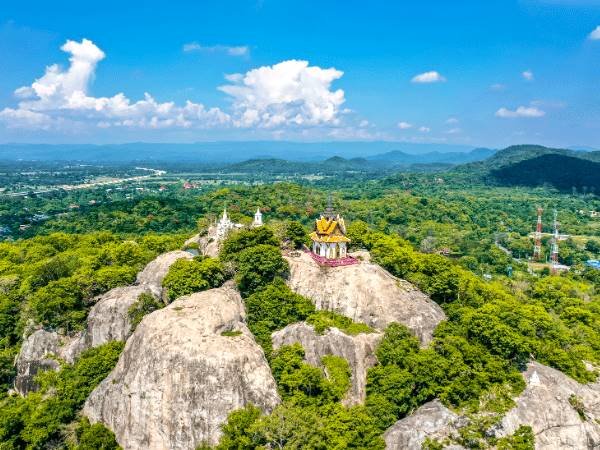
Thanjavur

Also known as Tanjore or the city of temples, Thanjavur has a lot of cultural value and is known for its famous Tanjore paintings, antiques and handicrafts, textiles and saris , its Carnatic music and musical instruments and of course the temples. Thanjavur enjoys a rich historical heritage and holds a very important position in the moulding of ancient as well modern south Indian civilization. Being of religious importance, this place is a must for all pilgrims. There are many religious places in and around the district. Siva Ganga Garden, Art Gallery, Palace & Saraswathi Mahal Library, Sangeetha Mahal are the main tourist attractions. This is a place where you can constantly witness the magnificent and dynamic cultures of the past and present breathing life into and living in the everyday, giving the area a unique and glorious identity.
Brahadeshwara Temple
The biggest attraction of Thanjavur – The Brahadeshwara Temple, also known as the Big Temple. Built during the reign of the Great Chola emperor, Raja Raja Chola, this temple is an architectural marvel. Protected by deep trenches on either sides and the Grand Anaicut River running through another, this temple is a favorite among the pilgrims. The shrine itself is a 216 feet structure. The sanctum is dotted with paintings from the Chola and Nayak periods. The statue of Nandi the Bull welcomes at the entrance.

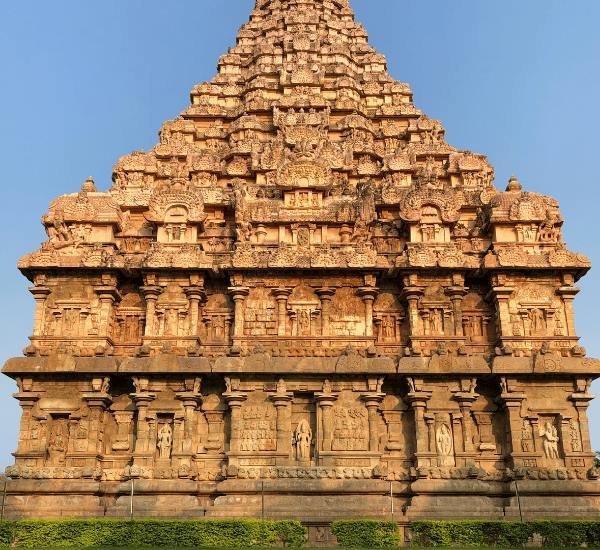
Gangaikonda Cholapuram
The magnificence of the Gangaikonda Cholapuram along with Brihadishwara temple will enchant you and thrill you with its history and engineering. A place which is a testimony to the architectural and engineering genius of the region and the pride of one of the greatest empires of India – Chola Empire, Gangaikonda Cholapuram is a place worth exploring.
Gangaikonda Cholapuram was the capital city of the Chola Empire for more than two centuries. This place of great historical relevance marked the beginning of one of the greatest reign in Southern Indian history. Today the great historical city is nothing but a small village with the Lord Siva temple as the symbol of the grandeur of its once glorious path. Compared many times to Thanjavur, another great Chola city, Gangaikonda Cholapuram is a great place to explore and unfold its heritage, grandeur and elaborate marvels and tales, safely tucked in history.
Vijayanagar Fort
Vijayanagar Fort is a famous tourist spot is located nearly 2 km from the Brahadeeswara temple. This majestic fort was built by Nayaks and partly by Maratha rulers during the early 1550 AD. The fort houses a Tanjore Palace, Sangeetha Mahal, Library and an exquisite art gallery that includes many sculptures and paintings. The Shiva Ganga Gardens are also a part of the complex. Though the fort is mostly in ruins, it still echoes its strength and grandeur it must have once possessed.
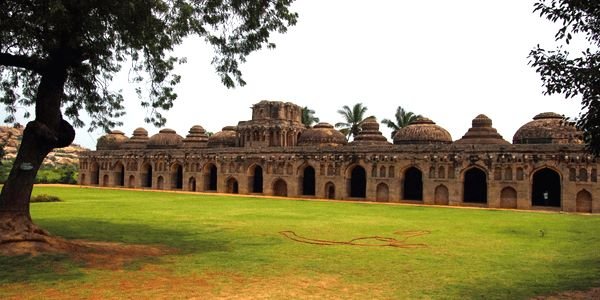
Thiruvannamalai
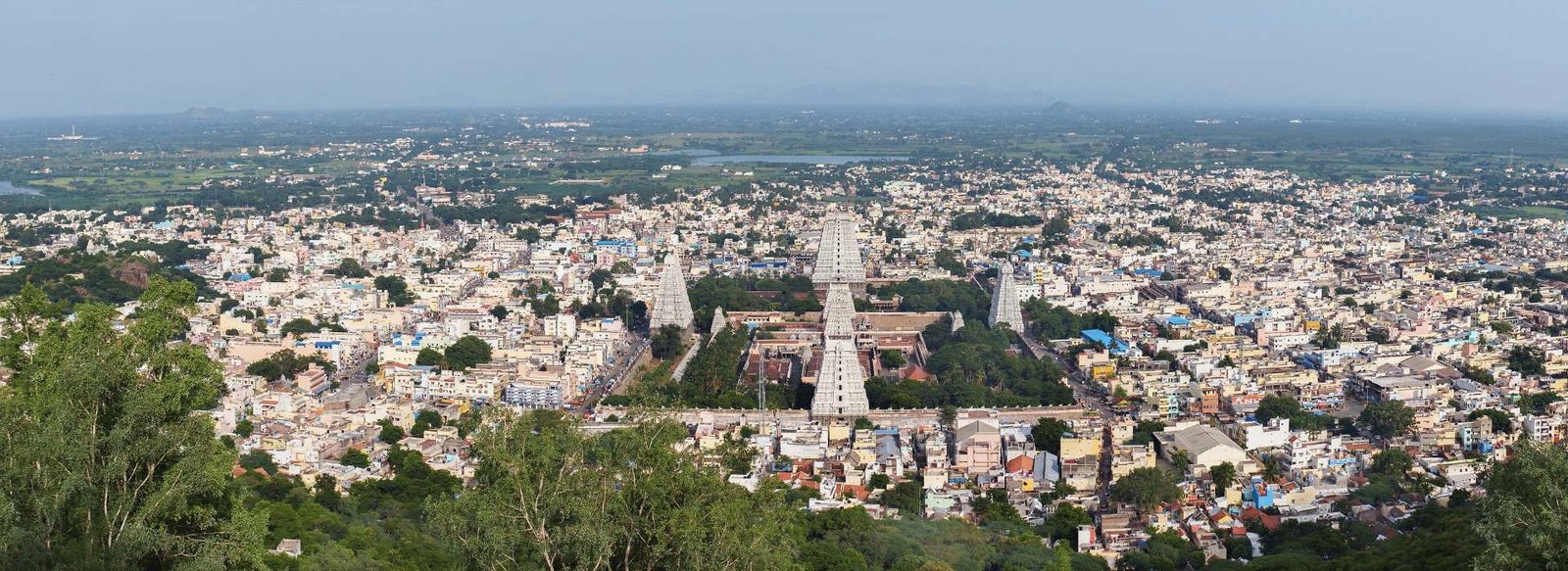
A town that offers a significant history adorned in its countless temples and ashrams, Thiruvannamalai is where Hindu Mythology takes the form of stunning architecture. Perched on top of the Malai hill, Thiruvannamalai is a holy town, most famous for its Arunachala temple among numerous other temples and ashrams dedicated to saints of olden times. Sri Ramana Ashram, Sathanur Dam, Sri Seshadri Swamigal Ashram are some of the important tourist spots as well as significant areas for followers. A colourful side of the area is seen during the days of Arunachaleswarat temple festival.
Gingee Fort
Known as the “Troy of the East” by the British, Gingee Fort is located in Villupuram District of Tamil Nadu, 160 kilometres from the state capital, Chennai and near the Union Territory of Puducherry. Locals have given the fort some notable names such as Senji, Chenji, Jinji or Senchi Fort. The majestic fort has three different hilltop citadels and a massive boundary of thick walls and cliffs. Owing to its enormous structure the fort is fortified to the extent that Shivaji, the Maratha king, named it as the “most impregnable fortress in India.” Visiting the fort makes one learn the reason for why it has been called by such influential names. As you reach the fort, you realise that it has been located at the most strategic location which made it difficult for the enemies to enter its premise. The fort indeed is a result of genius minds. Constructed mostly in the 16th century by the Vijayanagara Empire, the fort was later captured by the Marathas following the rule of Mughals, French and British on it. The fort was then sadly abandoned in the 19th century.


Sathanur Dam
Sathanur Dam, a stunning engineering marvel, is located at a distance of 30 kilometres from the city of Thiruvannamalai in Tamil Nadu. This breathtaking structure has been built over River Thenpennai (River Pennaiyar) flowing through the Chennakesava Hills in Thandarampet Taluk. The reservoir is called the Sathanur Reservoir and is considered as one of the major dams in the state. The structure consists of pleasant parks, a fish grotto and a huge crocodile farm that attracts nature enthusiasts and tourists from all over the world. The site is strikingly beautiful during the monsoons as the river gushes with clear waters. It is so attractive that it has been a favourite spot for many feature films, especially in the 50s and 60s.The dam was built to benefit the agricultural produce in Thiruvannamalai and the adjoining regions of the city. The region is dotted with a children’s park, a small zoo and a swimming pool. Photography is not allowed in the area.
Annamalaiyar Temple
Annamalaiyar Temple, a breathtaking temple complex dedicated to Lord Shiva, is located in the bustling town of Thiruvannamalai, at the base of Annamalai Hills in the South Indian state of Tamil Nadu. As you walk closer to the grand temple complex, you’ll notice how marvellously the structures have been built. This 25-acre complex is sure to mesmerize you with its beauty and elegance. There are numerous intricately adorned shrines and halls within the entire temple complex which is also considered as one of the largest temple complexes in India. Do make it a point to see the splendid eastern gopuram (tower), which is one the tallest temple towers in India as it stands 66 metres tall and the gorgeous thousand-pillared hall that extends serenely in the temple complex.
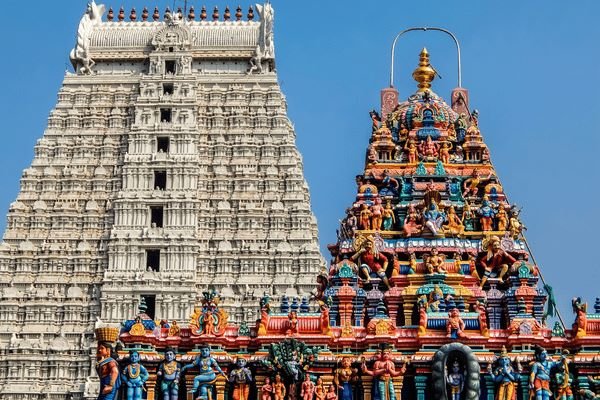
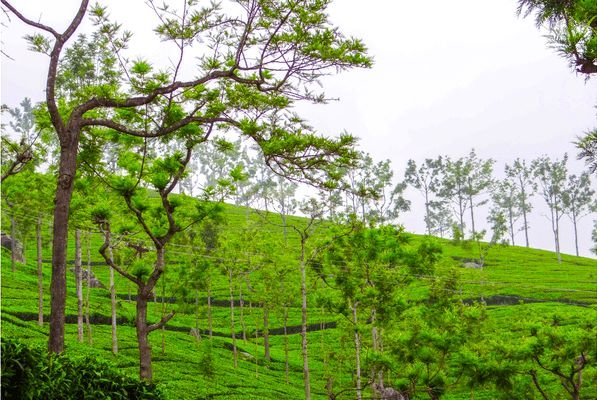
(Coonoor) Hdden Valley
Hidden Valley is all about exploring the unexplored places of Coonoor. This inaccessible place is an unusual location that gives its visitors a scenic picturesque. Hence making it a thrilling place to visit. Nestled on verdant greenery on the outskirts of Coonoor, this place is an excellent getaway for adventure enthusiasts. Mountaineering, rock climbing, and trekking are the other attractions of Hidden Valley.The valley is a pure delight for nature lovers and trekkers. Located beyond the Wellington Golf Course and near the Sim’s falls, the valley a perfect picnic spot for families and a romantic spot for couples. However, if you’re with friends, the place has other activities that might interest youngsters. Although the journey is physically demanding, one would never regret it for the remarkable experience.
Dolphin's Nose
Located about 12 km away from Coonoor is the Dolphin’s Nose about 1,500 meters above sea level. The tip of the peak of this enormous rock resembles a dolphin’s nose and this is one of the most visited tourist spots in The Nilgiris District of Tamil Nadu. It is set amidst the rolling hills of the Nilgiris Hills (or the Blue Mountains). The gigantic rock formation is entirely unprecedented. There are enormous canyons found on both the sides of the destination and there is a clear view of the Catherine Falls, another popular tourist destination with its ongoing current several thousand meters below, which is located at a short distance from the Dolphin’s Nose.

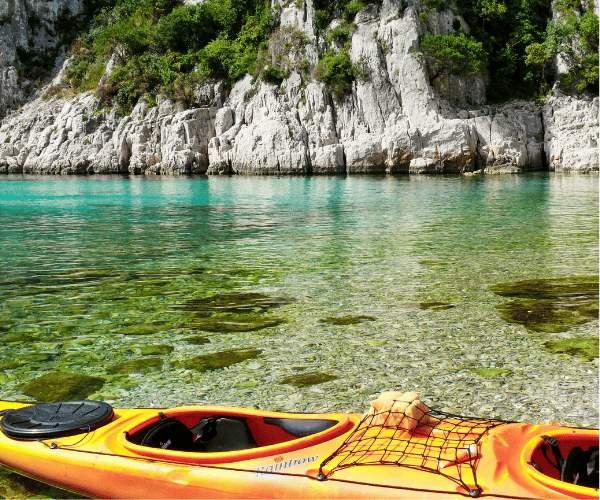
Sim's Park
An excellent and delightful treasure trove of some of the most exquisite plant species in the world, the Sim’s Park is an outstanding sightseeing destination in Coonoor that boasts of being home to over one thousand different species of flora. All of these different plants and trees are scattered all across the park, and a walk through the lush greenery and colourful, vibrant flowers provides refreshment, inner peace and tranquillity, not to forget the unique and beautiful views.The Sim’s Park is located in Coonoor in the Nilgiris in Tamil Nadu, on the northern side of the Coonoor Railway Station, and its easy accessibility is just one of the many features of this breathtaking beauty. The park is spread over an area of 12 hectares, and is divided into different sections, with the one with the Sholas and the widening footpaths being the most loved and cherished one.
Shopping in Coonoor
Shopping in Coonoor is considered as a whole new experience. With quaint, little shops offering exquisite artefacts, antique products, pretty embroidered shawls, apparels, Toda jewellery and handicrafts items which are perfect for gifting purposes.Coonoor is also known for the several varieties of aromatic tea that it offers. It also offers a wide range of organic products like honey and freshly prepared fruit jams (pear, peach, mulberry and passion fruit). How can one forget the delicious homemade chocolates and freshly baked cakes? As for your medicinal needs, Coonoor has various shops selling pure lavender and eucalyptus oil. You can also buy handmade antiques, Irish and Belgian table sets, Indian handlooms, beautiful linens and shadow worked bed sheets from the handicraft emporiums in the vicinity.

Chettinad
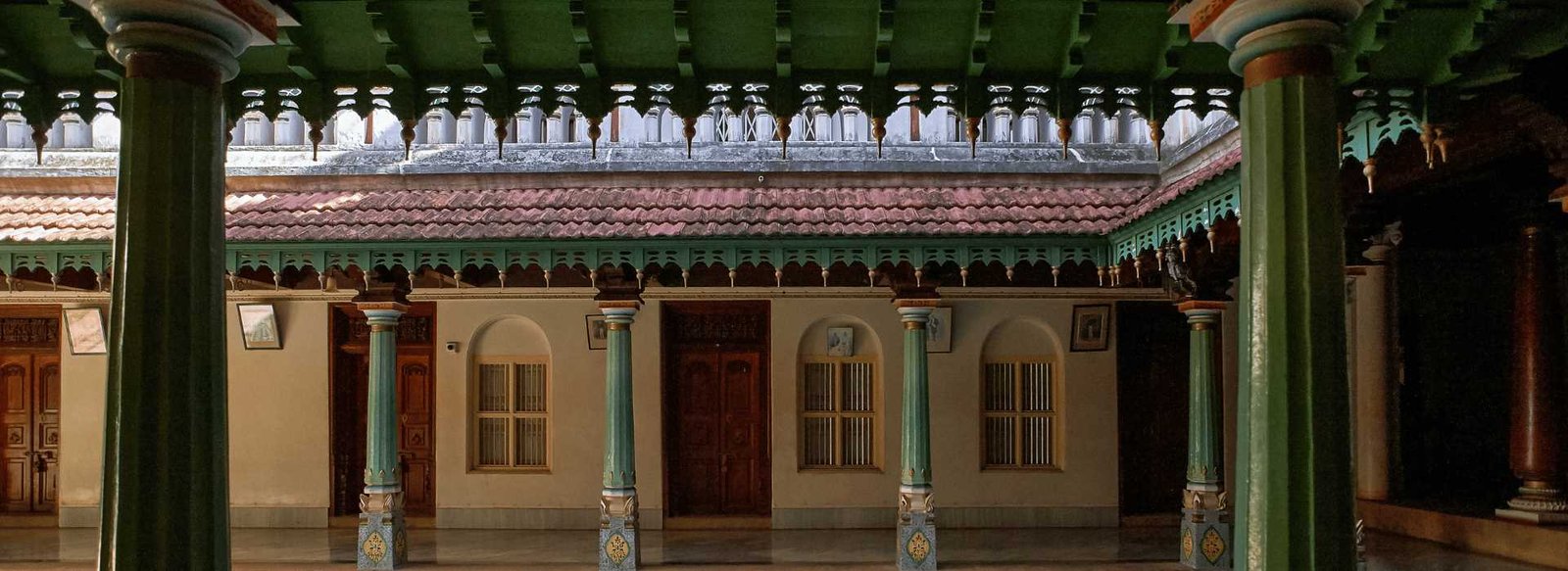
Located in the Sivaganga district of Tamil Nadu, Chettinad Showcases the rich heritage, striking art and grand architecture of the state. Apart from being known as a temple town, the Chettinad Cuisine is the most renowned in the repertoire of Tamil Nadu. The word “Chetti” is a Sanskrit term meaning wealth. It is derived from the original traders of the region who dealt in salt and spices for marbles and other decorative items used in the construction of their properties. It has an elaborately vibrant culture and an over the top extortionate township comprising of ridiculously opulent mansions, palatial homes, magnificent temples and fascinating museums.Chettinad comprises mainly a town known as Karaikudi and a cluster of 96 surrounding villages. The city has, perhaps, the most elaborate and rich culture and some truly fascinating traditions. The place is very much in India, but it dances to its tunes. There are temples, palaces, museums, fantastic food and everything else you will wish for in a vacation. This place will still stay in your memory for its incredible history and the truly memorable experience.
Chettinad Palace
Located in the Sivaganga district of Tamil Nadu, the majestic architecture of Chettinad Palace is a beautiful example of the indigenous Chettinad architecture. Adorned with embellishments from all over the world, this mighty edifice dates back to the year 1912. The construction style of the palace also reflects some European influence, which only adds to the regal beauty of the palace. The establishment was built under the guidance of Dr Annamalai Chettiyar, founder of the Indian Bank and the Annamalai University. The august grandeur of the Chettinad Palace is only enhanced by the vast expanses of lush greens surrounding it. Perched within the bounds of a carefully cultivated garden area, the palace is a sight to sore eyes. Once you recover from the breathtaking beauty of the natural surroundings, the ravishing architecture of the palace will enchant you with its charm. Carved with careful intricacy, the palace is a combination of detailing and opulence. The palace also houses a number of figurines which will effortlessly transport you back to the pages of history. A marvellous edifice, the palace is a sumptuous experience for all.

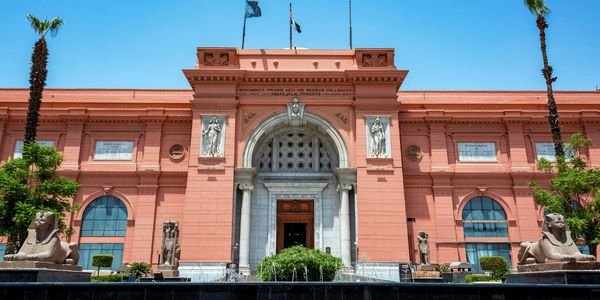
Chettinad Museum
The Chettinad Museum is a heritage home. The main reason of converting it into a museum, open to guests was to show them the unique Chettinad style of living. The place is full of heavy clothes, traditional gold jewellery, utensils, metal cutlery, huge copper water vats and grain bins and various other everyday items that reflect how these people go about their daily routines.
Chettinadu Mansion
Chettinadu Mansion is a heritage resort located in Kanadukathan which is over 100 years old and has been opened to the public as a resort for quite some years now. It is still a very well maintained heritage resort and is a perfect place for the ones who wish to experience the bygone times of Chettinad. The old age charm and the architecture are still intact. There are about 12 rooms which are rented out to tourists who wish to stay in the mansion. They offer complete privacy, comfortable stay and serve delicious Chettinad Cuisine to all their guests. Although traditional, the Chettinadu Mansion maintains an informal vibe for the guests to make them feel comfortable and welcome.

Trichy

Trichy is a mid sized, fast emerging city in Tamil nadu. It is a refreshing change from cities that are either completely religious and some that are nothing but concrete jungles. Trichy is one of those places that you can explore in a weekend and will hold secrets even after several years.Equipped with its own airport and railway station, Trichy enthralls you with not only the number of temples and churches it offer, but also by the amazing uniqueness that each of these places bring with them. Trichy is one of those places that you can cover in a weekend and will still hold secrets even after several years.
Rockfort Ganpathi Temple
By far the most popular place in all of Trichy is the Rockfort Ganpathi Temple. It derives its name from it’s unique building style. The temple structure comprises a huge rock, which is believed to be the oldest rock in the world, even older than The Himalayan Mountains. After climbing 344 steps, the devotees reach the main temple area. The temple has two sub parts- the Thayumanaswamy, which is dedicated to Lord Shiva and the Pillayar, which is dedicated to Lord Ganesha. The origins of the temple are traced back to the 7th century. The Shiva temple contains the Lingam form of the Lord.

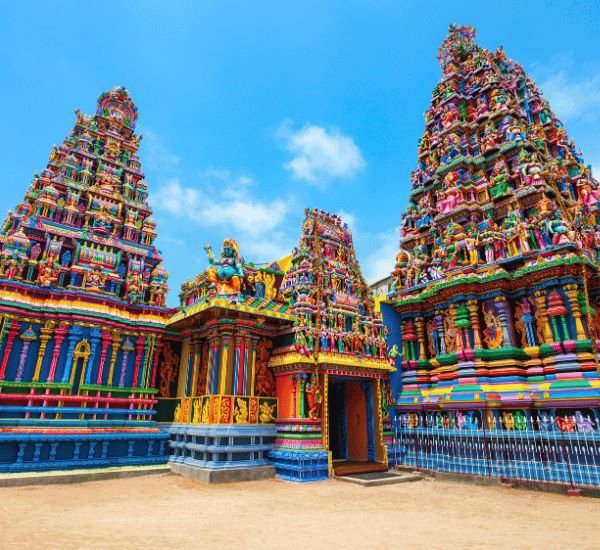
Samayapuram Amman Temple
The beautiful temple is located at about 20 km from the main city of Trichy. The Goddess worshipped here, Goddess Mariamman is believed to be the goddess of power.Mariamman is also believed to bring health and prosperity to its devotees. A strong belief is that this deity cures small pox as well as chicken pox. This temple has individual shrines for processional images of Mariamman and moolavar.The place is especially known for the annual festival of Thai Poosam, which is celebrated with a lot of fanfare. The idol of the goddess is made up of sand and clay, and there for, the main idol is not subject to abhishekams (sacred washing), which is done at almost all other Hindu temples. Instead the “abishekam” is done to the small stone statue in front of the idol, as a mark of respect. There is also a famous ritual of buying small metallic replicas of the idol and keeping them at home, whenever a family member falls sick and then donating it to the donation box when the illness is cured.
Ranganathaswamy Temple
Sri Ranganathaswamy Temple is situated in Srirangam Town of Trichy. The temple is devoted to Lord Ranganatha, a reclining form of Lord Vishnu. The temple complex along with the surrounding area covers a total area of 156 acres. It has been constructed in Dravidian style of architecture The temple is the largest functional temple in the world. The outstanding architecture of the temple includes 21 surrounding ‘gopurams’ along with an ornate gateway, which is also the tallest ‘gopuram’ of India. There is also a royal temple tower in the place, which covers a base area of 32500 sq. ft and has a height of 196 ft.The temple also has a hall with nearly 1000 decorated pillars.
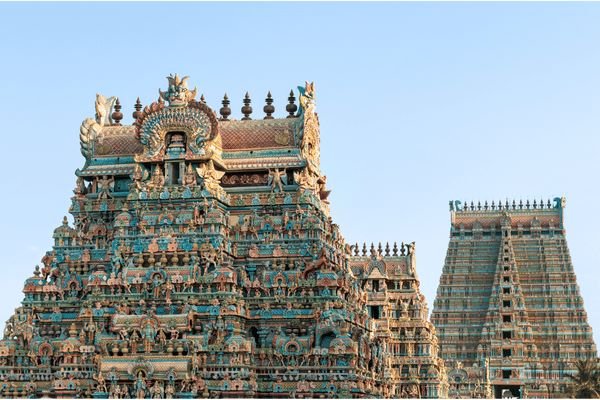

Kallanai Dam
Located at a distance of only 15 km from Tiruchirapalli, the Kallanai Dam is built across the flowing River Kaveri. It spans over 1079 feet and is over 66 feet wide! This ancient dam was originally constructed about 2000 years ago, and it is the oldest functional water regulator structure in the entire country. It may not have much else to offer, but the mesmerising view is surely going to be worth taking a detour. The dam also serves as an inspiration for modern-day dams due to the excellent engineering behind it. Also known as Grand Anicut, the enormous dam is famous not only because it is pertinent to the living of thousands of households around it, but also because of its unmatched scenic beauty. It is constructed with rough stones, but they have been indigenously supporting the dam’s structure for over 200 decades. It is still in an excellent condition and is often frequented by locals for picnics. One finds true peace here, watching the sunset and the overall spectacular view. Various new developments, especially like a park, have also been made for kids.
Chidambaram

A beautiful temple town in the Cuddalore District of Tamil Nadu, Chidamabaram is famous for housing the marvellous Lord Nataraja Temple and the famed chariot festival. Situated 250 kms away from the city of Chennai, Chidambaram has been a place of architectural glory and religious importance since antiquity. It has been ruled by several dynasties over time namely Cholas, Pandyas, Vijayanagar rulers, Marathas and the British. Due to the cultural influences, it boasts of a rich heritage and traditions. It is famous for its many temples which are a marvellous rendition of the Dravidian style of architecture and a beautiful representation of Dravidian culture.

Nataraja Temple
One of the five Panchbootha Sthala, the Nataraja Temple is a place of deep religious importance for the Hindus. Spread across a sprawling 40 acres complex, the Lord Nataraja Temple situated in the heart of the city is one of the most beautiful examples of the genius of Chola architecture.The temple is dedicated to Lord Shiva and is one of only five places where he is represented as an idol instead of a lingam. The temple is an architectural treasure trove giving insights into the Dravidian culture that prevailed during the times of the Cholas
Kali Temple
A beautiful temple dedicated to Goddess Kali in the northern end of the town, the Thillai Kaliamann Temple was built by Kopperunjingan who ruled the region around 1229 to 1278 A.D. In honor of the cosmic dance battle between Goddess Kali and Lord Shiva
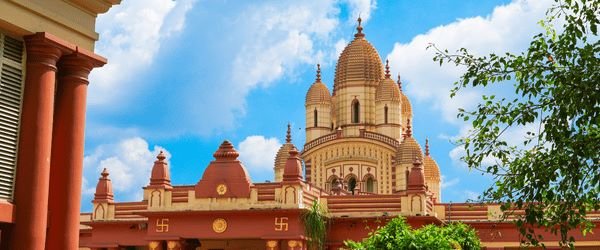
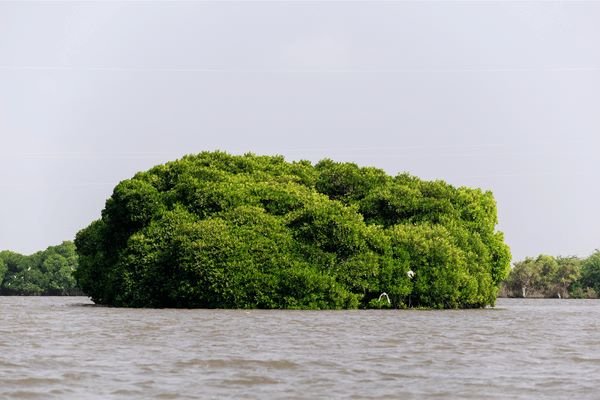
Pichavaram Mangrove Forests
The second largest Mangrove forest in the world, Pichavaram is located off the tourist trail but is totally worth the effort. One can be enchanted by the complex river system and canal network that bind this beautiful place together and support the rich biodiversity of the place.Situated nearby the temple town of Chidambaram, Pichavaram can be enjoyed through a boat ride around the 1100 hectare area of the forest, which takes you through narrow canal, breathtaking sceneries and allows you to witness the amazing life forms of the Mangrove tress while adoring the bird life of the forest. The sea is just 6 km from the forest and one can see the sand bank which separates the forest from the Bay of Bengal during the boat ride.
Shopping in Chidambaram
Chidambaram offers limited possibilities for shopping one can only shop for souvenirs at the markets, the replicas of the temple and the Nataraja and some local handicrafts.


